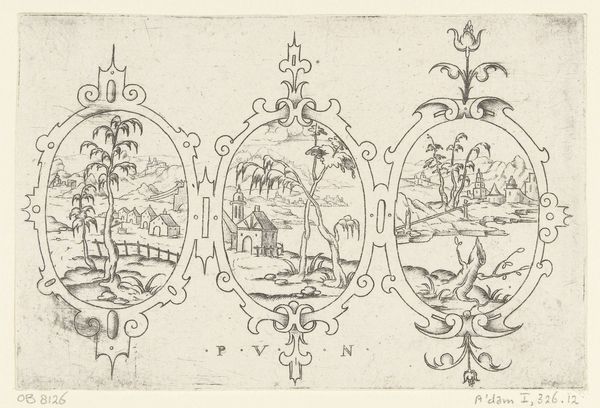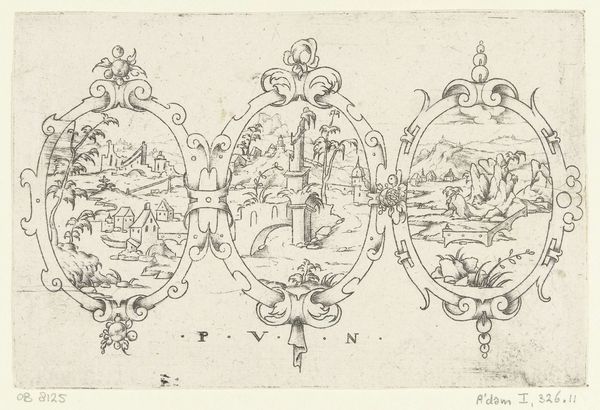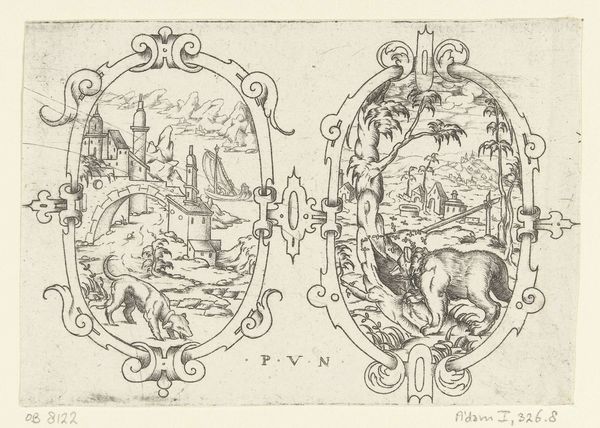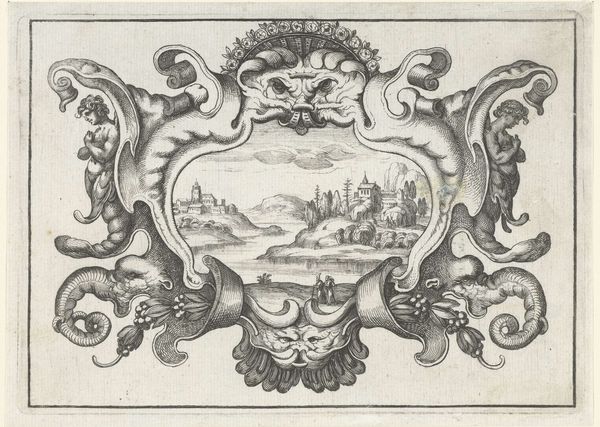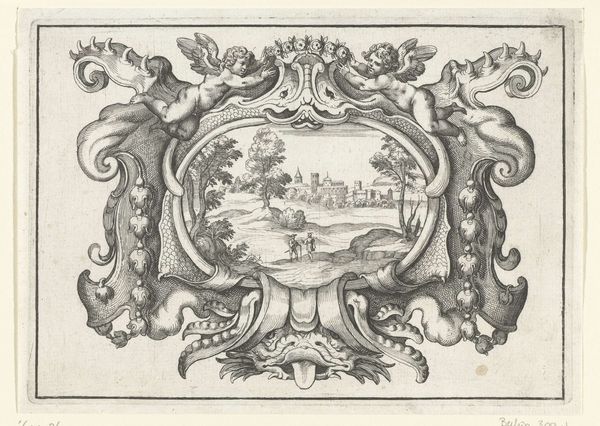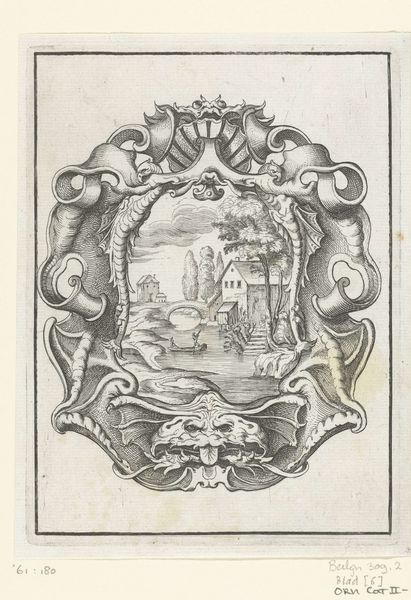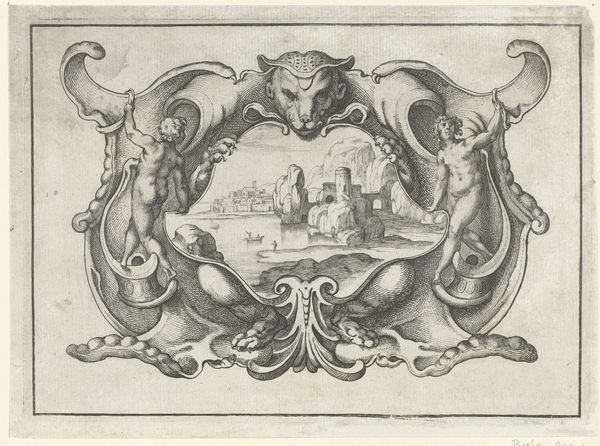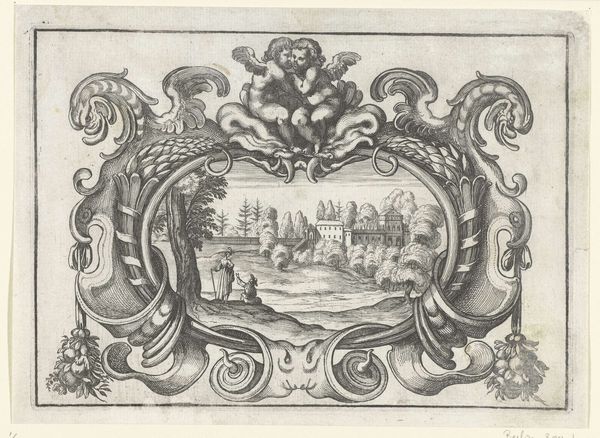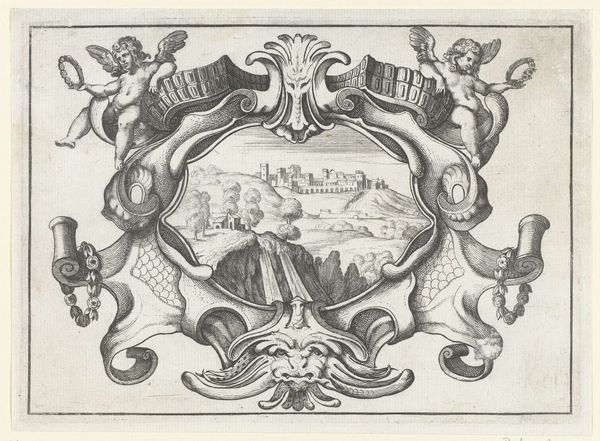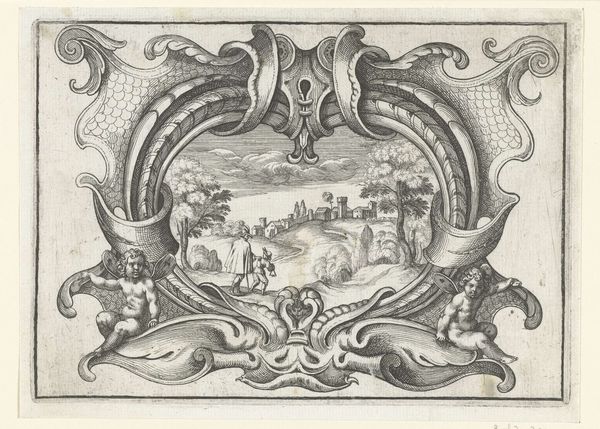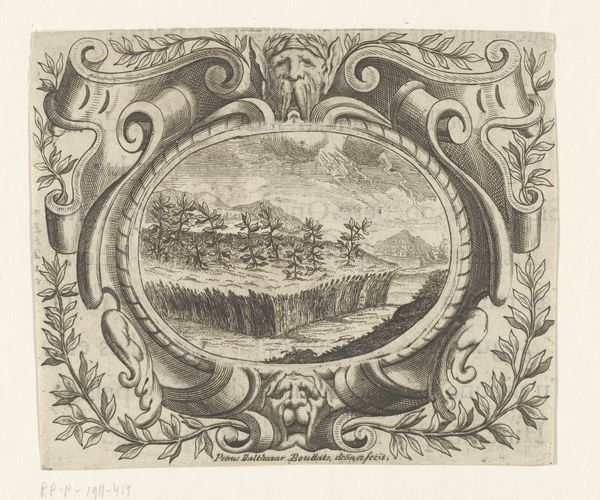
drawing, print, etching, engraving
#
drawing
# print
#
etching
#
landscape
#
figuration
#
11_renaissance
#
history-painting
#
engraving
Dimensions: height 99 mm, width 152 mm
Copyright: Rijks Museum: Open Domain
Editor: So, here we have "Two Lying Ovals, the one on the left with deer," an etching and engraving by Paul Flindt from around the 17th century. It's interesting how he's combined these two miniature landscapes in such a decorative way. It almost feels like a page out of a bestiary, or perhaps an emblem book. What jumps out at you? Curator: The use of the oval format immediately positions this within a historical context, doesn’t it? Consider the rise of scientific illustration during this period, particularly botanical and zoological studies. These detailed observations of nature were frequently framed in ovals, giving the image a sense of contained knowledge. Does Flindt play into this intellectual trend, do you think? Editor: Possibly? But the landscapes feel a little… fantastical. More like a stage set than scientific observation. What’s with the animals acting out some narrative? Curator: Exactly. Notice how the architectural elements in the right oval—that elaborate domed building—contrast with the humble huts in the deer scene. It points towards an engagement with courtly display, prestige, perhaps even empire, but tempered with a more humble nature scene on the left. Editor: I see your point. It’s like two different worlds presented as complements or contrasts. Did prints like this circulate widely? Curator: Absolutely. Prints played a critical role in disseminating ideas, styles, and stories across geographical boundaries. The fact that Flindt uses both etching and engraving is interesting – suggesting he wants to emulate the tonal range of paintings. But, the main thing is that, as Historians, we need to keep reminding ourselves of art's social functions and of its position in an expanded print marketplace of imagery. Editor: That’s fascinating. I was focused on the artistry, but you’ve really shown how this print participates in broader social and intellectual trends. It is a window into a whole world of images, narratives, and class values of the past. Curator: Indeed, the “artistry” itself performs cultural work! Keep asking such astute questions, and you'll uncover those stories hidden in plain sight!
Comments
No comments
Be the first to comment and join the conversation on the ultimate creative platform.
